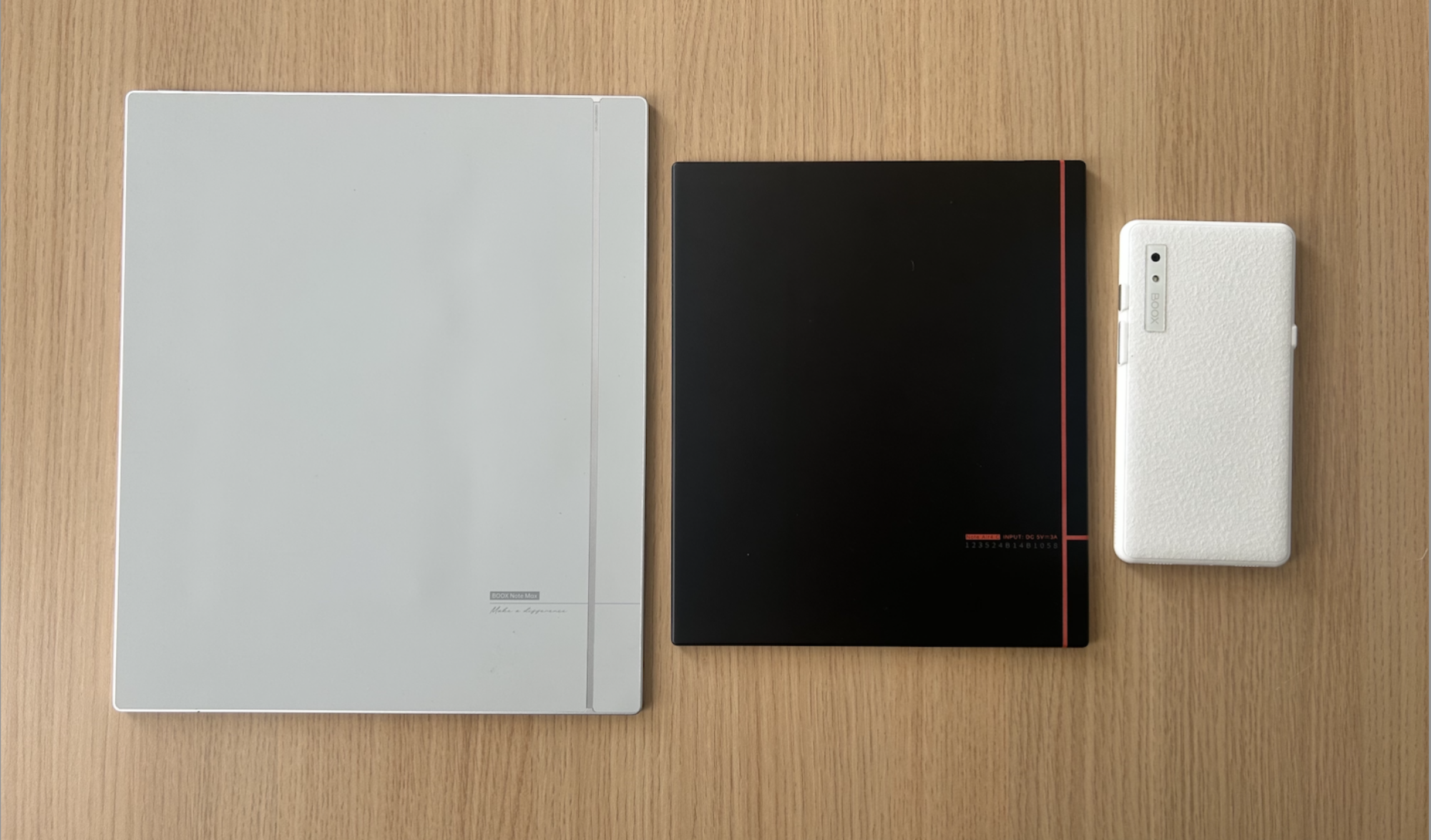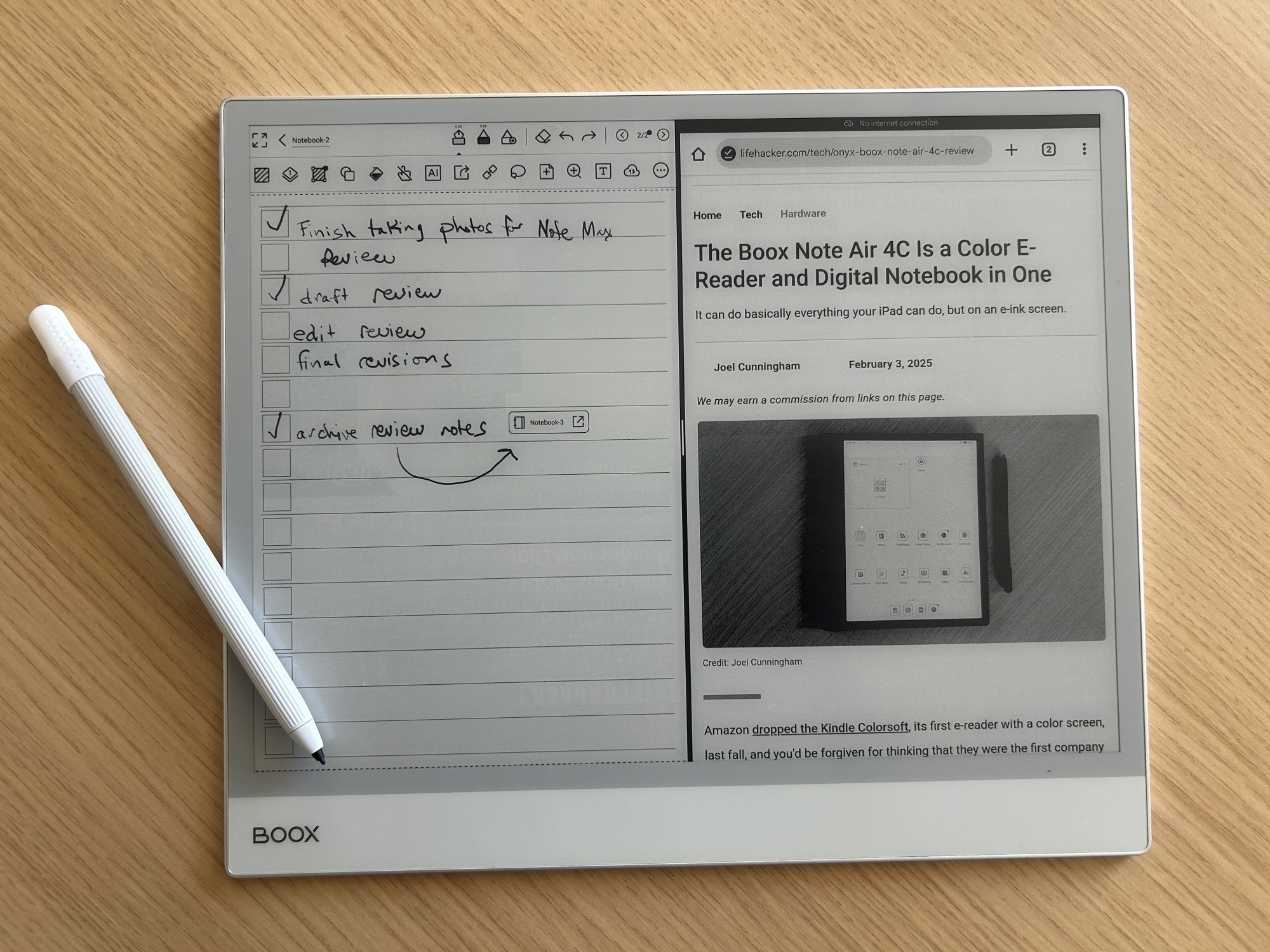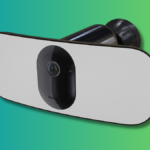A Comprehensive Look at the Boox Note Max: The Next Level in E-ink Technology
If you have ever owned an e-reader, there’s a high likelihood that it was one of the many models from Amazon’s Kindle series. Although the Kindle holds a prominent position in the e-reader sphere, it doesn’t automatically claim the title of the best. In fact, several competitors have stepped up to enhance features and experiences that Amazon originally pioneered.
One of the standout challengers in this arena is Onyx International, a Chinese company known for its innovative e-readers released under the Boox brand for over ten years. Notably, Boox has introduced features such as color e-ink displays long before Amazon considered them for the Kindle.
While Boox has released models that could be classified as favorites for many, such as the Palma, which has a phone-like design, their product line extends well beyond e-readers into several e-ink notebooks. Imagine devices that combine aspects of both an iPad and traditional e-readers—these products feature familiar grayscale screens yet possess the capability to run applications and integrate stylus functionality akin to full-fledged tablets.
After testing the Boox Note Air 4C, the most recent model from their color e-ink digital notebook lineup, the experience was nothing short of impressive. Despite the price tag potentially being a hurdle for some, it stands out as a fantastic choice for those seeking a multifunctional gadget equipped with a writable, paper-like display that is as productive as it is engaging.
Recently, testing the newest iteration—the Boox Note Max—has made me prefer it over the Note Air 4C due to its sheer size. The name says it all; this device is grand, and I mean that positively.
A Truly Grand Device
Having previously used tablets with a maximum screen size of 10 inches, the shift to a 13.3-inch format felt dramatically more extensive. It’s reminiscent of that classic comparison between pizza sizes; once you experience the larger option, it’s hard to go back. The Note Max parallels a laptop screen in size and comfort, but it feels even more substantial to hold. It’s ultra-thin, radiating premium quality—ideal considering the significant $650 price tag. The companion stylus features 4096-level pressure sensitivity, offering a writing experience comparable to Apple’s Pencil in terms of both comfort and build quality.

For a variety of tasks—like annotating PDFs, flipping through a recipe book, diving into manga, or using the split screen for multitasking—having such a large canvas is immensely beneficial. For someone who usually gravitates toward smaller e-readers, this expanse is refreshing.

The HD E Ink Carta 1300 screen boasts a resolution of 3200 x 2400 pixels (300 ppi) delivering sharp clarity—text remains crisp even when enlarged, and images are clear enough to read intricate dialogue in comic books. While the Carta 1300 is designed to provide a brighter and whiter look compared to older E Ink versions, it’s still largely perceived as gray.
No Front Light, with a Purpose
Since the advent of front-lit e-ink screens, most mid to high-tier e-readers have included this feature. For instance, a front light can enhance a grey e-ink display, making it appear brighter. One might wonder why the Boox Note Max does not come equipped with a front light.
This design choice is intentional, catering to a target audience with specific needs that include reading, editing documents, managing calendars, and primarily, taking notes. Incorporating a front light would require an additional layer, causing the writing experience to feel less direct as the stylus would be further from the writing surface. Removing this extra layer results in a more authentic writing feel, which enhances the overall experience.
A lack of a front light may increase clarity, a crucial feature since using the Note Max in poorly lit environments can be challenging. Users accustomed to brightening displays on their devices may need to adjust to reading small print under adequate lighting conditions.
Is this tradeoff worthwhile? For those who plan to utilize this for extensive handwritten notes, absolutely. The superior writing quality combined with its expansive screen will cater to your needs. However, for anyone interested in getting a front light, the smaller yet equally capable Note Air 4C might be a better fit.
A Digital Note-Taking Dream
For a device designed with note-taking in mind, it must excel in core functionalities—recording notes, marking up PDFs, linking files, and functioning both online and offline—to compensate for sacrificing features like a front light. This is where the Note Max truly shines.
Alongside its larger display, it maintains functionality similar to the Note Air 4C. Whether using the Notes app or navigating PDFs, the experience is fluid and customizable; varying writing instruments and line thickness is a breeze. Zooming in on PDFs is quick with minimal lag, and the integrated microphone facilitates voice note recording linked to specific sections of your notes.
Moreover, the split-screen mode allows running two applications side by side, enabling tasks like reading an article while jotting down notes concurrently.

Although not directly compared to the Kindle Scribe, which has received mixed reviews regarding file transfer difficulties, the Note Max accommodates most major cloud services seamlessly—importing and exporting files is straightforward.

In essence, for those searching for a digital notebook adept at managing planning, research, and organization, the Note Max delivers effectively.
Expect Some Learning Curves
Given that the native Boox applications were likely developed in Chinese before localization, their usability is commendable. However, it’s essential to keep in mind that navigating through its myriad of features may require some experimentation. There might be instances where searching online becomes necessary to clarify functionalities.
Despite its impressive capabilities, the Note Max’s complexity might be daunting for those accustomed to more user-friendly interfaces. A learning curve persists, but the rich features and customization available make the effort exceedingly worthwhile.
More Than Just a Digital Notebook
While the focus tends to be its digital note-taking prowess, the Note Max does not compromise in the e-reading department. It operates on a streamlined version of Android 13, granting instant access to the Google Play Store. Whether you have e-books from Kindle, Nook, Kobo, or various sources, the Note Max accommodates them all.
An Excellent Choice for Books and Comics
Comfortably reading on the expansive screen is a delight, although its weight may not be ideal for reading while in bed or commuting. Nonetheless, for anything laden with graphics—comics or manga—the large display significantly enhances the experience.

White-and-black displays can at times require tweaking settings to elucidate color images, leading to some loss in detail. Nevertheless, diving into manga or comic panels is a rewarding experience primarily due to the open dimensions and sharp resolution.
If audiobooks are more to your liking, you can access the Kindle app (or any preferred audio player) to listen using the surprisingly loud built-in speakers. However, the absence of a headphone jack necessitates reliance on Bluetooth or USB-C for audio devices.
Versatile Apps, with Varying Results
The access to an expansive app store isn’t limited to e-reading applications; the Note Max can also be employed for email, Google Docs, gaming, and video streaming. Boox’s offerings include multiple screen modes (like “Normal,” “Regal,” and “A2”) tailored to optimize user experience across different uses. Customizing screen refresh rates per app can also help in content consumption.

The higher resolution modes produce striking images but may lead to ghosting, while quicker modes facilitate smoother scrolling at the cost of image crispness. Hence, while the Note Max can function similarly to a tablet, experiences like video streaming aren’t typically enjoyable.
Impressive Battery Life During Intensive Use
The absence of a front light contributes to improved battery longevity when compared to models like the Note Air 4C. Although a precise battery test wasn’t conducted, continuous heavy use demonstrated about a 10% decrease in battery life per hour, implying that you can expect several days of usage. Additionally, the 3700 mAh battery quickly charges via USB-C, allowing for a quick boost in just about half an hour.
A Note on Reliability
Throughout the testing period, hardware performance remained robust with no issues detected. That said, Boox devices may lack reliable customer service—if problems arise, such as broken screens, expect to pay for repairs yourself. Some customers have reported difficulties with warranty support, reinforcing the importance of purchasing through Amazon for improved return policies.
Stylish Keyboard Case, Yet Not Fully Optimized
Purchasing the Boox Note Max directly from Onyx includes a basic magnetic cover, with an option to buy a keyboard case for an extra $170. Despite being well-crafted with premium features (faux-leather style, solid weight, excellent keyboard feel), usability is inhibited by the inherent lag of e-ink technology, leading to frustrating typing experiences.

While visually appealing, the lag in typing and cursor movement diminishes usability for tasks which require precise input. Reports suggest improvements with updates over time, but it may still not meet the needs of everyone.
Final Thoughts
After spending a substantial amount of time exploring the Boox Note Max, it’s become clear that its true potential is underpinned by premium craftsmanship and a notable size that enhances both reading and writing experiences. Though the interface can be complex, those who engage with its features will appreciate the customization and versatility it offers. For power users who prioritize extensive text processing and note-taking, the Note Max is a great resource. However, for those not in need of its full capabilities, other options may be worth considering.












